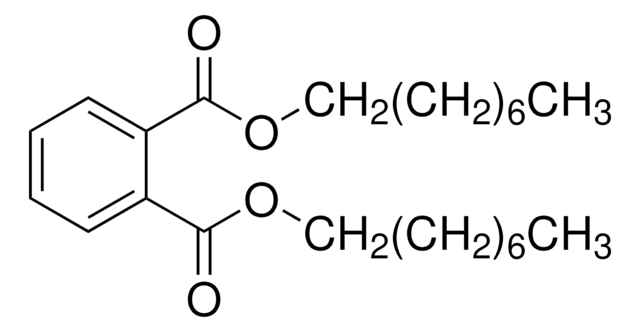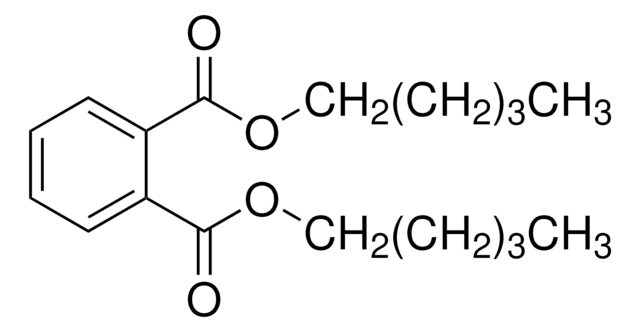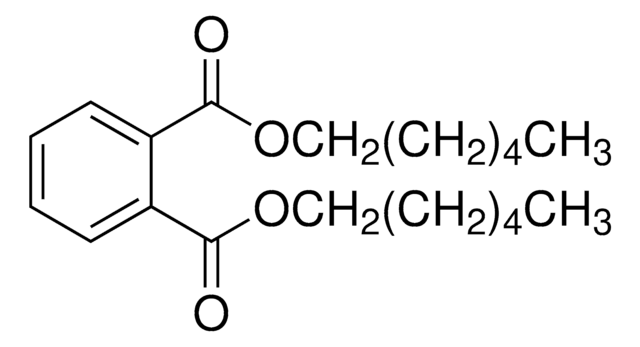36934
Bis(methylglycol) phthalate
analytical standard
Synonyme(s) :
Bis(2-methoxyethyl) phthalate, Dimethylglycol phthalate
About This Item
Produits recommandés
Qualité
analytical standard
Niveau de qualité
Durée de conservation
limited shelf life, expiry date on the label
Technique(s)
HPLC: suitable
gas chromatography (GC): suitable
pb
230 °C/10 mmHg (lit.)
Densité
1.173 g/mL at 20 °C (lit.)
Application(s)
cleaning products
cosmetics
environmental
food and beverages
personal care
Format
neat
Chaîne SMILES
COCCOC(=O)c1ccccc1C(=O)OCCOC
InChI
1S/C14H18O6/c1-17-7-9-19-13(15)11-5-3-4-6-12(11)14(16)20-10-8-18-2/h3-6H,7-10H2,1-2H3
Clé InChI
HSUIVCLOAAJSRE-UHFFFAOYSA-N
Vous recherchez des produits similaires ? Visite Guide de comparaison des produits
Description générale
Application
Produits recommandés
Mention d'avertissement
Danger
Mentions de danger
Conseils de prudence
Classification des risques
Repr. 1B
Code de la classe de stockage
6.1C - Combustible acute toxic Cat.3 / toxic compounds or compounds which causing chronic effects
Classe de danger pour l'eau (WGK)
WGK 1
Point d'éclair (°F)
249.8 °F - closed cup
Point d'éclair (°C)
121 °C - closed cup
Équipement de protection individuelle
Eyeshields, Gloves, type ABEK (EN14387) respirator filter
Faites votre choix parmi les versions les plus récentes :
Certificats d'analyse (COA)
Vous ne trouvez pas la bonne version ?
Si vous avez besoin d'une version particulière, vous pouvez rechercher un certificat spécifique par le numéro de lot.
Déjà en possession de ce produit ?
Retrouvez la documentation relative aux produits que vous avez récemment achetés dans la Bibliothèque de documents.
Les clients ont également consulté
Articles
A sensitive, quantitative, and reproducible SPME-GC/MS procedure was developed by Supelco for the extraction of phthalate esters from oily food matrices, such as the flavored oils included with ramen noodle kits.
Notre équipe de scientifiques dispose d'une expérience dans tous les secteurs de la recherche, notamment en sciences de la vie, science des matériaux, synthèse chimique, chromatographie, analyse et dans de nombreux autres domaines..
Contacter notre Service technique








